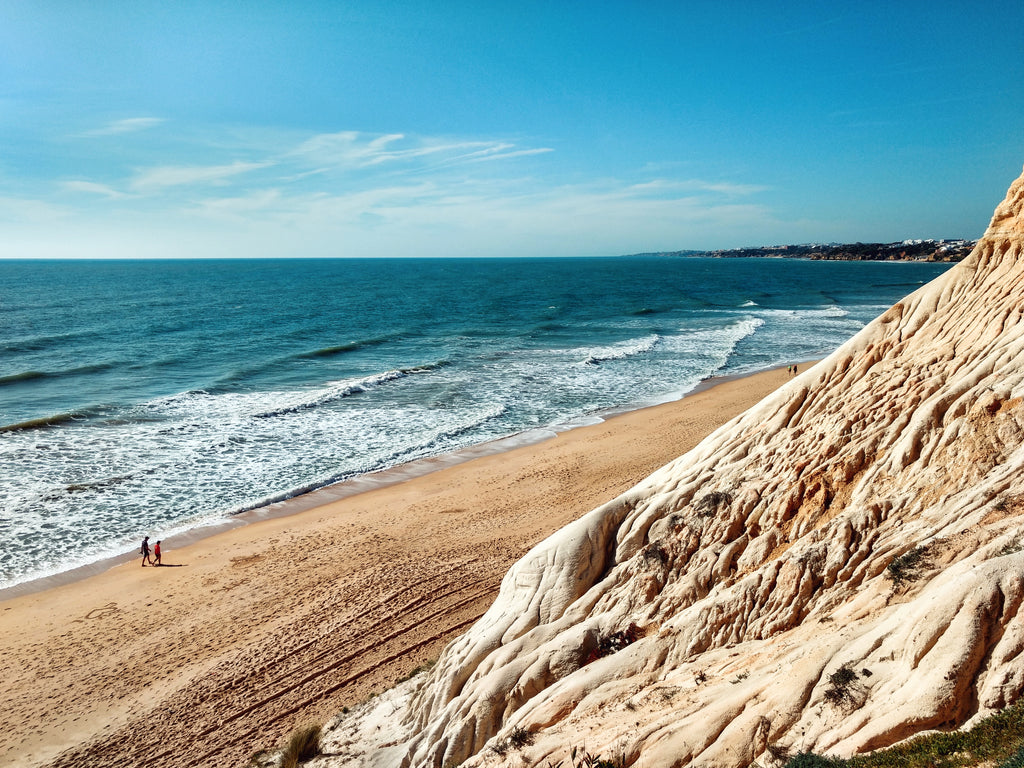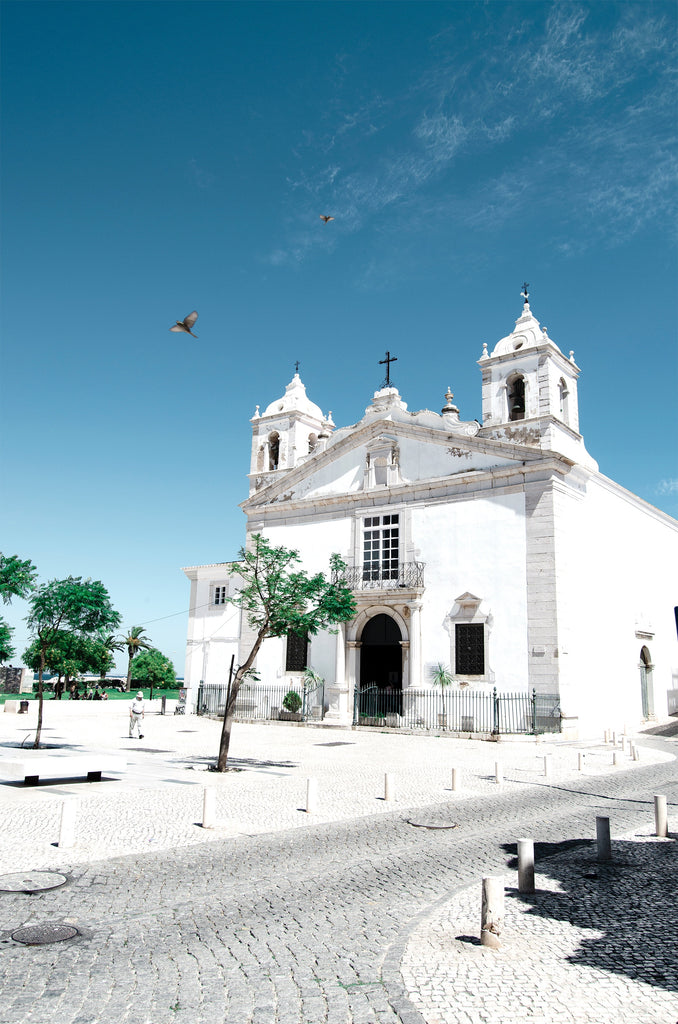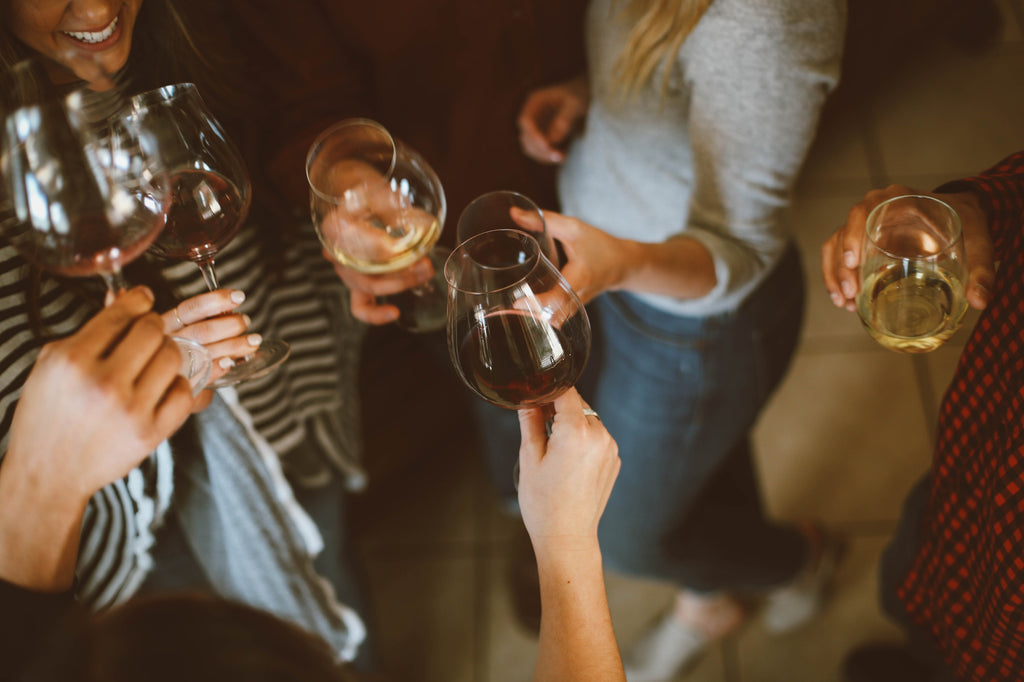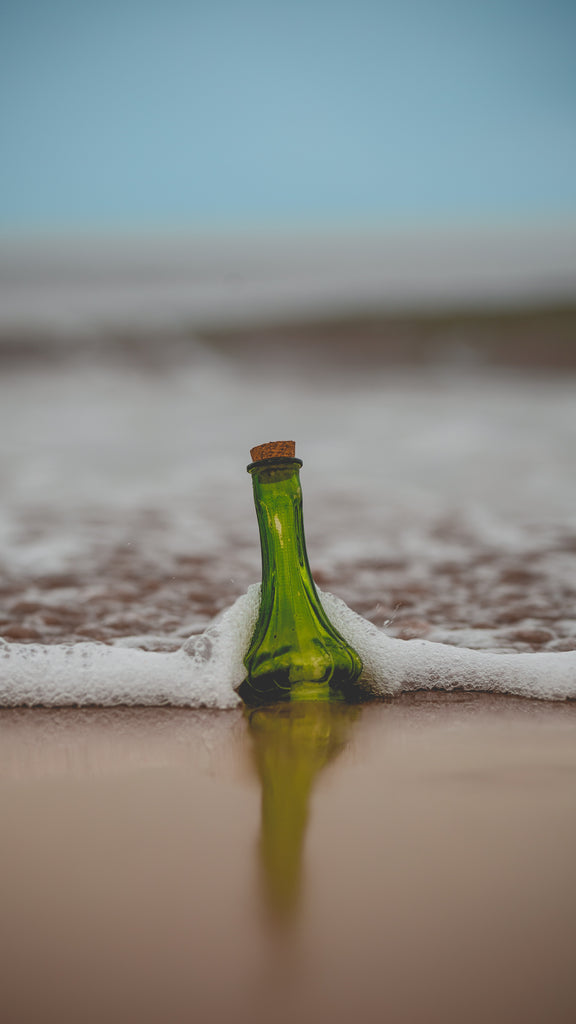The tourism industry in the Algarve region, located in southern Portugal, has exploded in recent decades. The Algarve is known for its 300 days of sunshine a year, its endless sandy beaches, and its blue ocean.
But winemaking also has a long tradition in the Algarve; in fact, countless bottles of high-quality wine are produced there every year. Who would have thought?
In the following, you will not only gain more detailed insights into the holiday paradise of the Algarve, but will also be introduced to the astonishingly long history and current developments of wine growing in the Algarve.
The diversity of the Algarve
The Algarve, or "Europe's sunniest coast," is located in southern Portugal and is certainly one of Europe's most popular holiday destinations. With its stunning cliffs, golden beaches, and historic sites, it attracts hundreds of thousands of tourists every year.
The sea

The sea in the Algarve, which reflects various shades of blue depending on the time of day, invites you to enjoy a wide range of water sports and swimming fun and also offers the perfect opportunity to admire the wildlife.
The sport

Many sports enthusiasts and golfers are also attracted to the Algarve by the wide range of activities on offer, as well as the miles of carefully landscaped lawns and golf courses.
Each town in the Algarve has different facets and offers different activities, with Albufeira, Faro, Lagos and Tavira certainly being among the most well-known.
The kitchen

However, these places have one important thing in common: the wide range of restaurants, bars, and pubs. Food and drink are considered special friends on the sunny coast.
It offers exquisite cuisine in fine restaurants, as well as many traditional local eateries. There, you can enjoy fresh fish and meat dishes and locally produced Portuguese wine at affordable prices.
Wineries and fishing on the southern coast of Portugal are particularly important sources of income, with the Portuguese themselves eating around 70 kg of fish a year - more than any other European.
Tourists can experience this diversity of fish and seafood firsthand in the huge market halls of the Algarve's markets. Another important source of income is the cork industry, but more on that later.
The culture

Strolling through the picturesque streets of the villages, you'll quickly notice that there's no shortage of culture in the Algarve. In the alleys, you can admire chimneys and ceramics of all kinds adorning the roofs and houses.
If you're a fan of day trips , the Algarve is the perfect place for you. The region boasts a variety of stunning castles and churches dating back centuries.
Winegrowing in the Algarve

Portugal's winemaking history is very long and traditional, with its roots dating back to 2000 BC , when the first vines were planted in the Algarve .
Over the following centuries, more and more grape varieties and different production techniques were introduced by ancient peoples such as the Phoenicians, but also the Greeks and later the Romans.
The Portuguese owe their first merchant fleet to viticulture. From the 12th century onward, viticulture in the Algarve was so strongly promoted by King Dionysius, or the "Peasant King," among others, that the profits enabled the merchant fleet to be built up.
The wine trade in the Algarve is expanding
As a result of the Treaty of Windsor , signed between Great Britain and Portugal in 1386 , a strong wine trade developed between the two countries. Algarve wine, in particular, was highly regarded, and its popularity was even recognized by kings in the 15th century.
Wine production in the Algarve and exports to distant lands therefore increased dramatically. Even during the time of the voyages of discovery, wine was being exported on sailing ships to distant and still unknown lands.
Decline in the Algarve wine trade
Unfortunately, an earthquake in 1755 devastated the Algarve region and reconstruction was never properly undertaken, drastically reducing wine production.
Decades later, the wine industry suffered another setback due to the ever-growing tourism industry in the Algarve holiday magnet.
Some buyers, such as restaurateurs and holidaymakers who bought the fine wine from the winemakers, were always found. But many winemakers couldn't resist the quick cash, so they sold their businesses to hotel chains or real estate companies, and the Algarve wine region slowly faded away.
Turnaround and current development of the Algarve wine industry
The turning point came at the end of the last century. With the support of the Algarve Viticultural Commission, many vineyards were restructured and new vineyards were created.
Many people only became aware of Algarve wine again when British singer Cliff Richard bought his own winery there .
The Mediterranean climate of the Algarve: perfect conditions for quality wine

The wine-growing region can be divided into 4 sub-areas from east to west:
-
Lagos
-
Portimao
-
Lagoa
- Tavira
These regions have diverse soil types, including slate, clay, limestone, and sandstone, which give Algarve wines their unique character. The soils tend to become sandier toward the coast, with the best sites located on mineral-rich slate.
The Algarve also offers excellent conditions for viticulture , thanks to its particularly Mediterranean atmosphere. The Espinhaço de Cão, Caldeirão , and Monchique mountain ranges protect the Algarve from harsh weather conditions and thus also from the vines freezing during the winter months.
For this reason, most of the beneficial climatic influences, such as the warm winds, come from the south. The rare rainfall and Mediterranean heat allow the grapes to ripen at an above-average rate. This gives Algarve wines a diverse range of unique and distinctive aromas .
But why?
The wind from the sea moderates the heat somewhat and thus prevents the excess formation of sugar in the grapes, which would otherwise lead to an excessively high alcohol content.
The vines of the Algarve
These remarkable climatic and territorial conditions produce different types of vines that are later processed into high-quality wine .
From the towns of Lagos in the west of the Algarve to Tavira in the east, a variety of white, but mainly red, grapes thrive due to the different soil conditions .
The most common red grape varieties include Negra Mole and Castelão . Other grape varieties grown throughout the region include Alicante-Bouschet, Tempranillo (Aragonez), Baga, Crato Preto, Cabernet Sauvignon, Merlot, Syrah, Trincadeira, Petit Verdot, and Touriga Nacional .
Siria, Vital and Arinto are among the most widely planted white grape varieties in the Algarve, although international grapes such as Crato Branco, Chardonnay, Muscat d'Alexandrie, Perrum, Rabo-de-Ovelha and Sauvignon can also be found.
The typical wines of the Algarve
The Algarve is more of a red wine region and the most famous wine varieties are made from the traditional Castel ão and Negra Mole grapes.
The number of local white wines is rather limited, although interestingly, some are also made into dessert wines with a high alcohol content, which are comparable to Spanish sherry .
The Branco , a cuvée composed of the grape varieties Arinto and Chardonnay , impresses with its mineral notes and fresh fruit.
Another wine worth mentioning is the Reserve made from Alicante Bouschet, Trincadeira and Cabernet Sauvignon , which impresses with its spice and depth.
In general, the white wines and rosés of the Algarve are pleasantly fresh and racy, and the red wines have an elegant and aromatic taste with a high alcohol content.
Algarve wine is trending
The wine industry in the Algarve is currently booming.
Events such as the PortoBay Wine Week are held to introduce visitors to the world of Portuguese wine.
The wines are also presented and promoted at international wine fairs such as the Lagoa Wine Show , the BTL International Tourism Fair in Lisbon and the World Travel Market in London.
In addition, visitor centers such as the one at the Barranco Longo winery and the one on the Quinta da Tôr estate are being set up, which will have wine cellars and tasting rooms and invite interested parties into the world of Algarve wines.
The Algarve wine routes
Perhaps the most influential initiatives, attracting the attention of many wine connoisseurs and tourists, are the Algarve's wine routes. In 2013, the tourism authority decided to introduce the Rota dos Vinhos and its accompanying pass. This allows free visits to seven of the region's wineries and the chance to enjoy Algarve wines.
The various wineries are divided into four thematically and territorially different wine routes .
1) The Rota Gil Eanes runs through the area around Lagos.
2) The Rota do Arade explores the wineries around Portimão.
3) The Rota dos Mouros describes the wine villages around Silves.
4) The Rota do Cliff , which was created in honor of Cliff Richard, leads to and through Albufeira.
Each wine route has its own individual character , offering tastings, restaurants and fine wines that enchant the senses.
Long live the cork oaks!

In addition to tourism and viticulture, southern Portugal is known for the production of bottle corks . Portugal is the world's largest cork supplier. About half of the cork products marketed come from Portugal and the Algarve.
Cork is a completely natural product, more precisely it consists of the dead cells of the bark of cork oak trees.
The water-repellent property , essential for cork production, is provided by the substance suberin in the bark . Initially, only champagne bottles were sealed with corks. But as the wine industry boomed, corks became increasingly popular.
The cork oak grows to an average height of 10 to 15 meters and remains green year-round. It is largely resistant to forest fires , which are particularly common in the Algarve during the summer months. Otherwise, these cork oaks can live up to 350 years , although the first harvest can only be achieved after 25 years.
However, many Portuguese insist that high-quality cork can only be harvested after the first two harvests have been completed—which only occurs every nine years. The workers perform this extremely hard work, as they still harvest the cork by hand.
According to the locals, some of the best and thickest cork oaks in Portugal grow in the small village of São Brás de Alportel in the western part of the Algarve .
Conclusion:
The Algarve is not just picturesque landscapes and beaches, but has so much more to offer. With its unique sights, its own industries such as cork and fishing, and its first-class wines, which have gained international popularity in recent decades, the Algarve is a fusion of Portuguese resources.
The future of Algarve wines promises a flourishing variety that you should definitely keep an eye on.
About the author
Inara Muradova is an SEO expert and corporate blogger. In addition to technical search engine optimization and SEO consulting, she actively supports companies with the conception and writing of professional blog posts.




